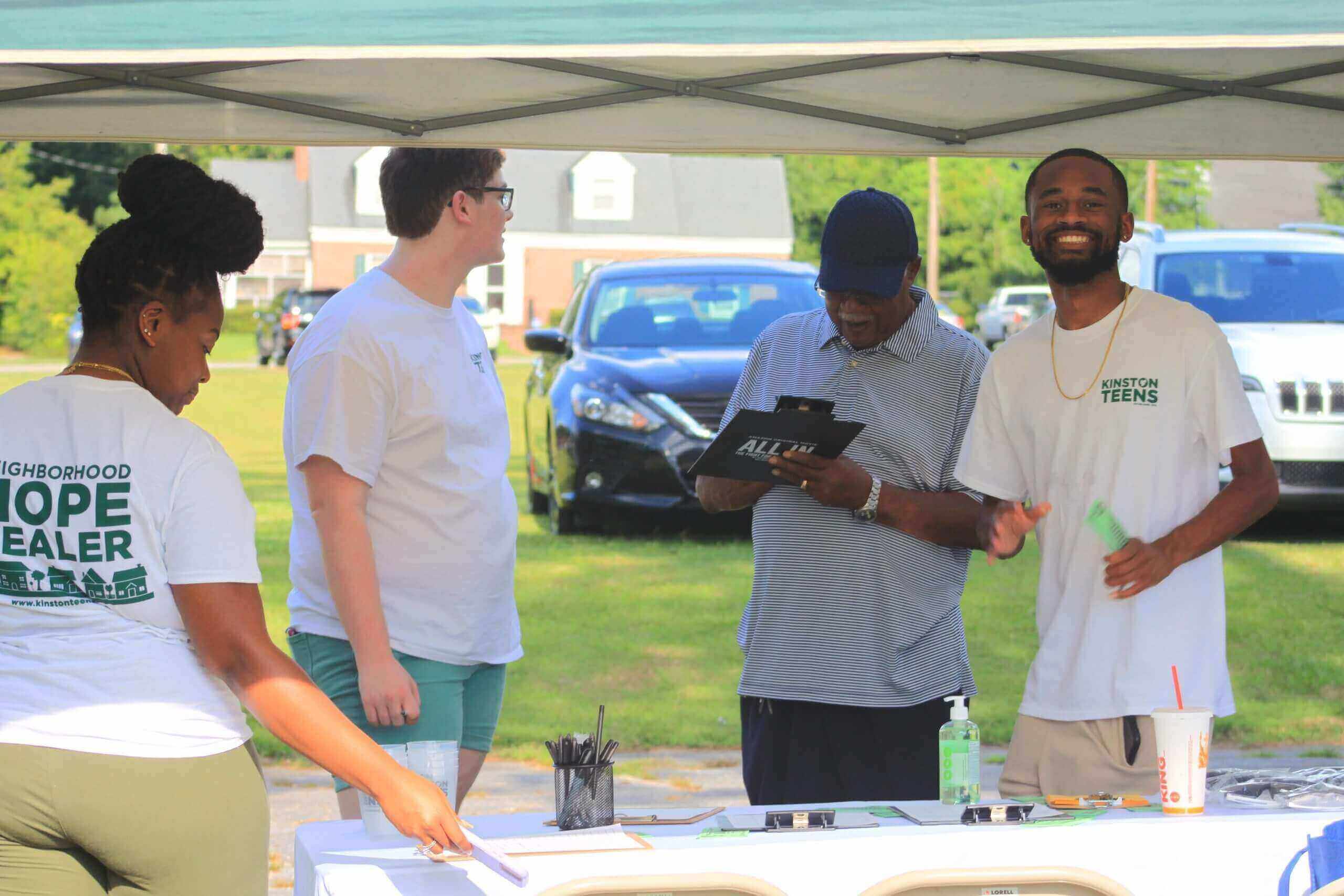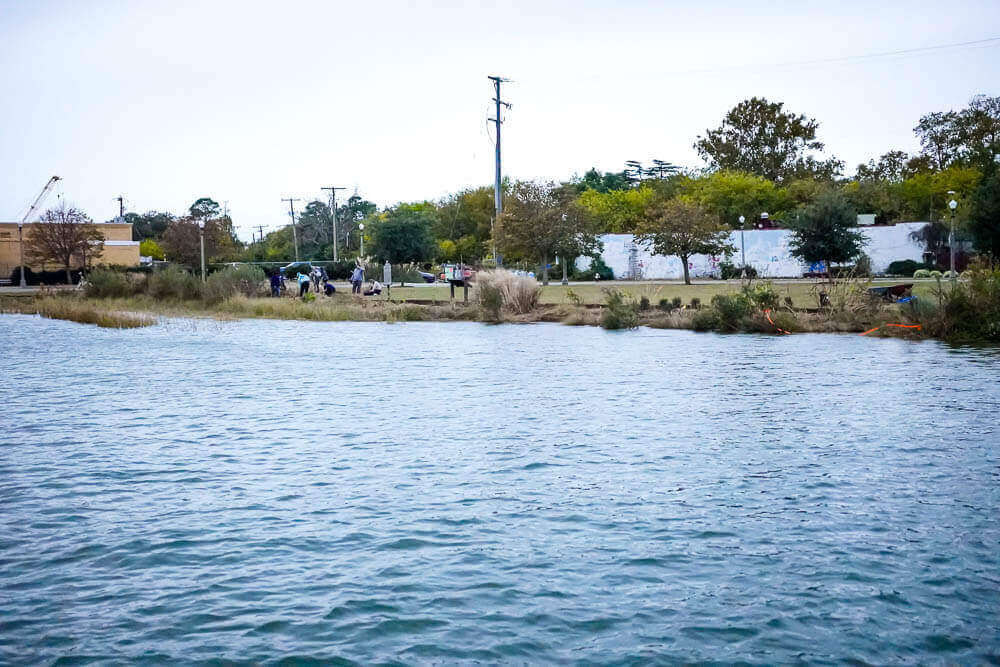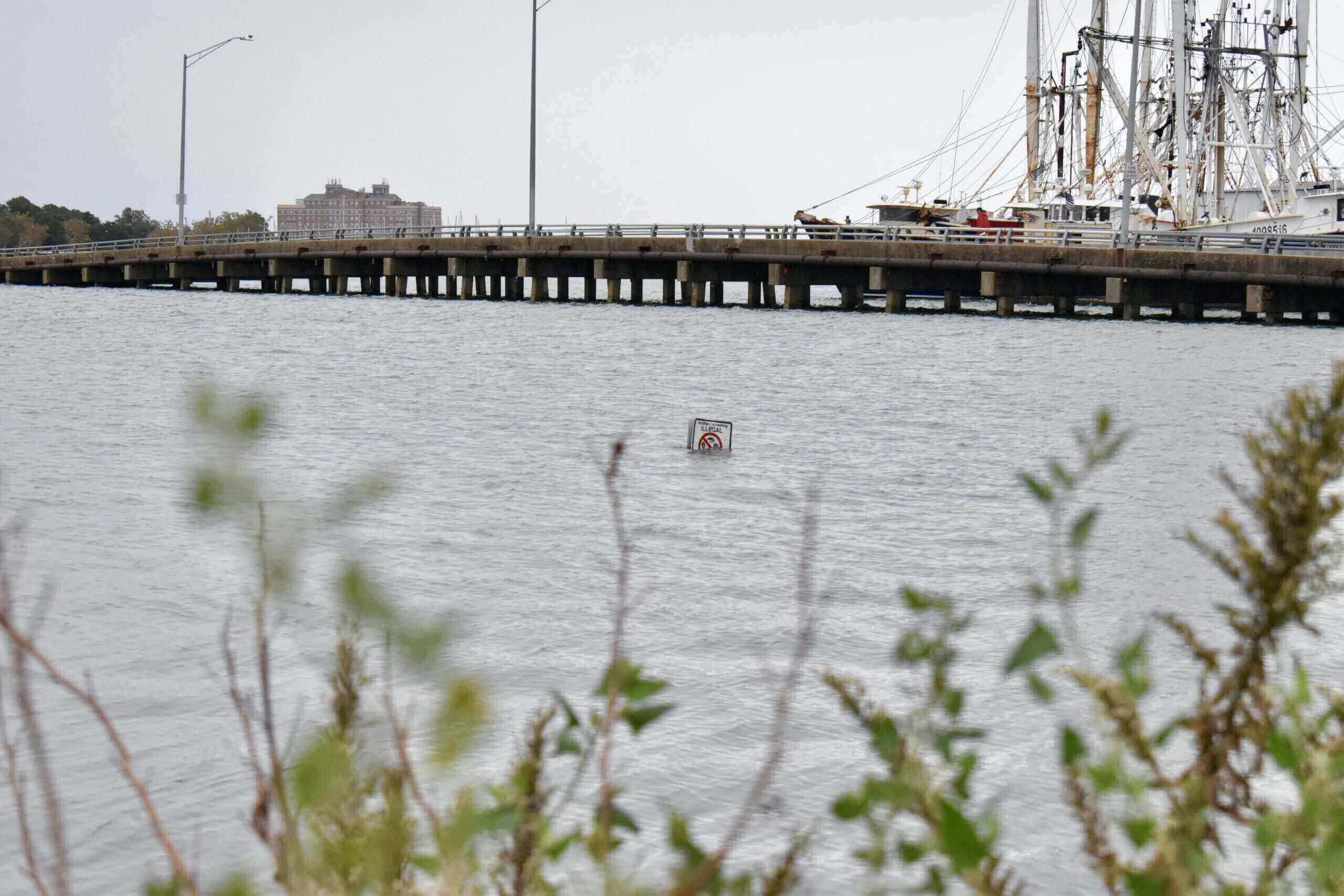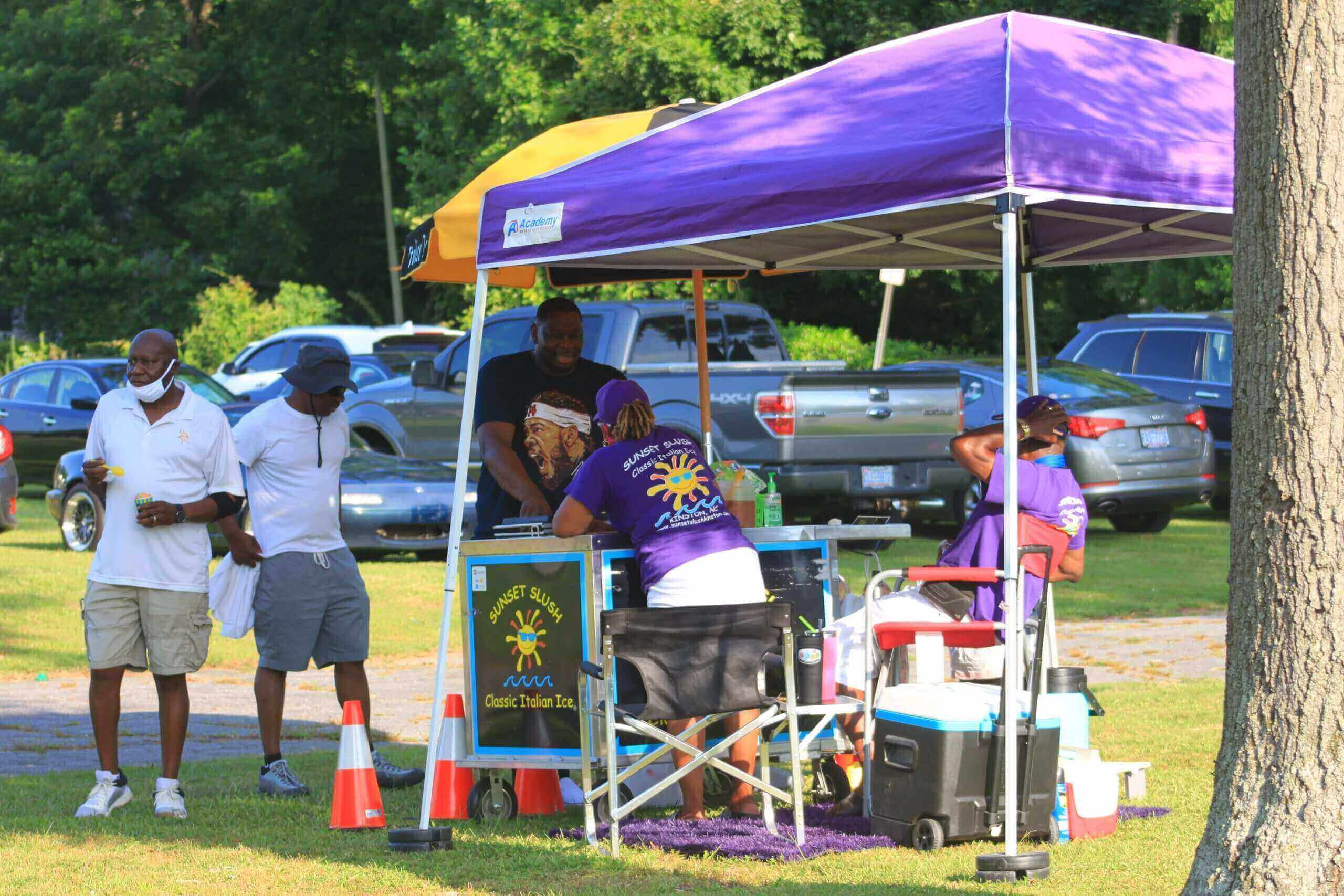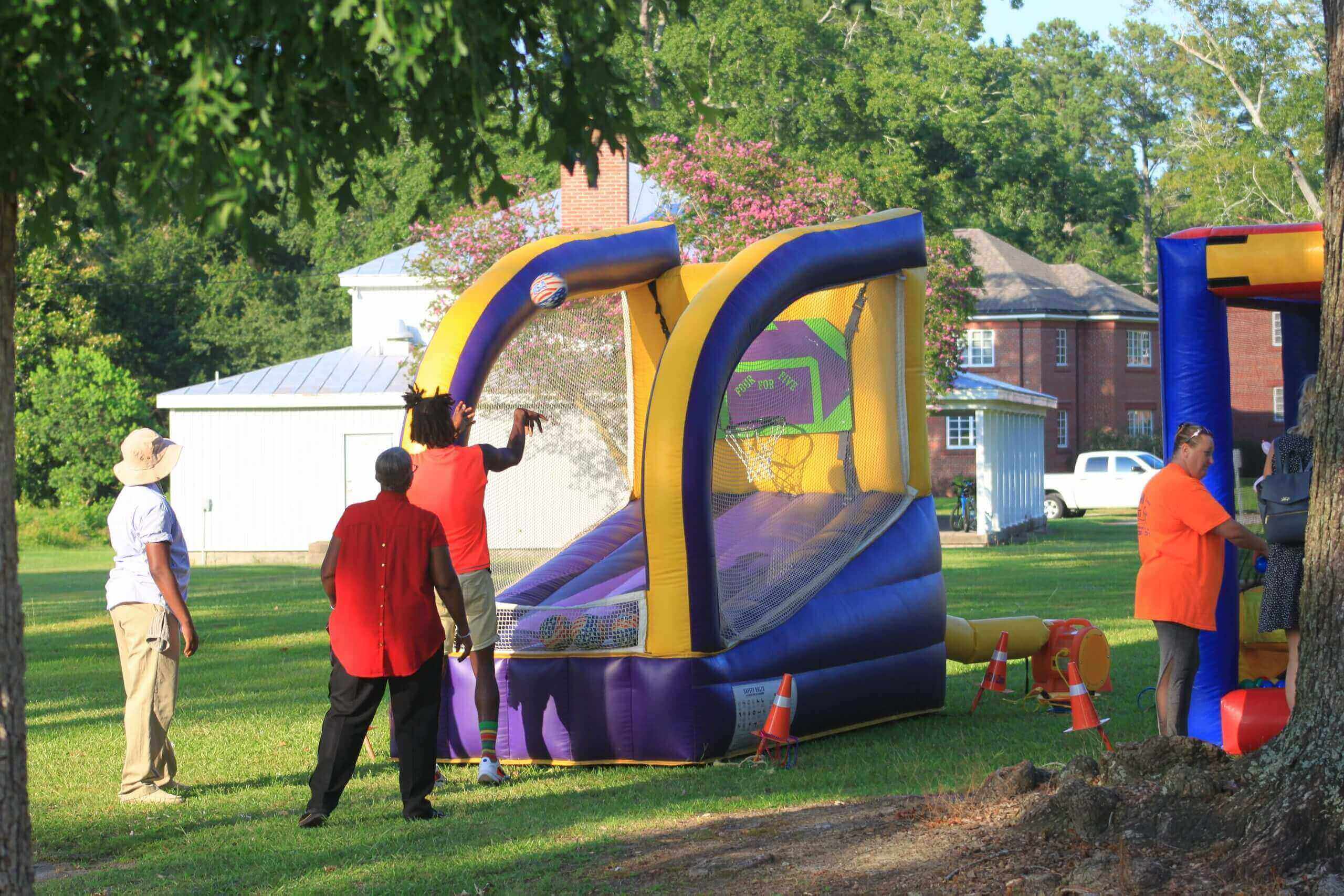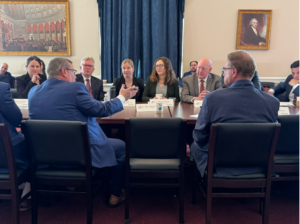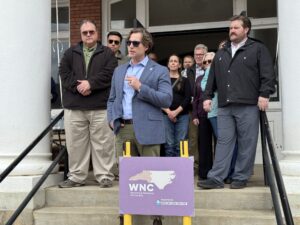January 25, 2023
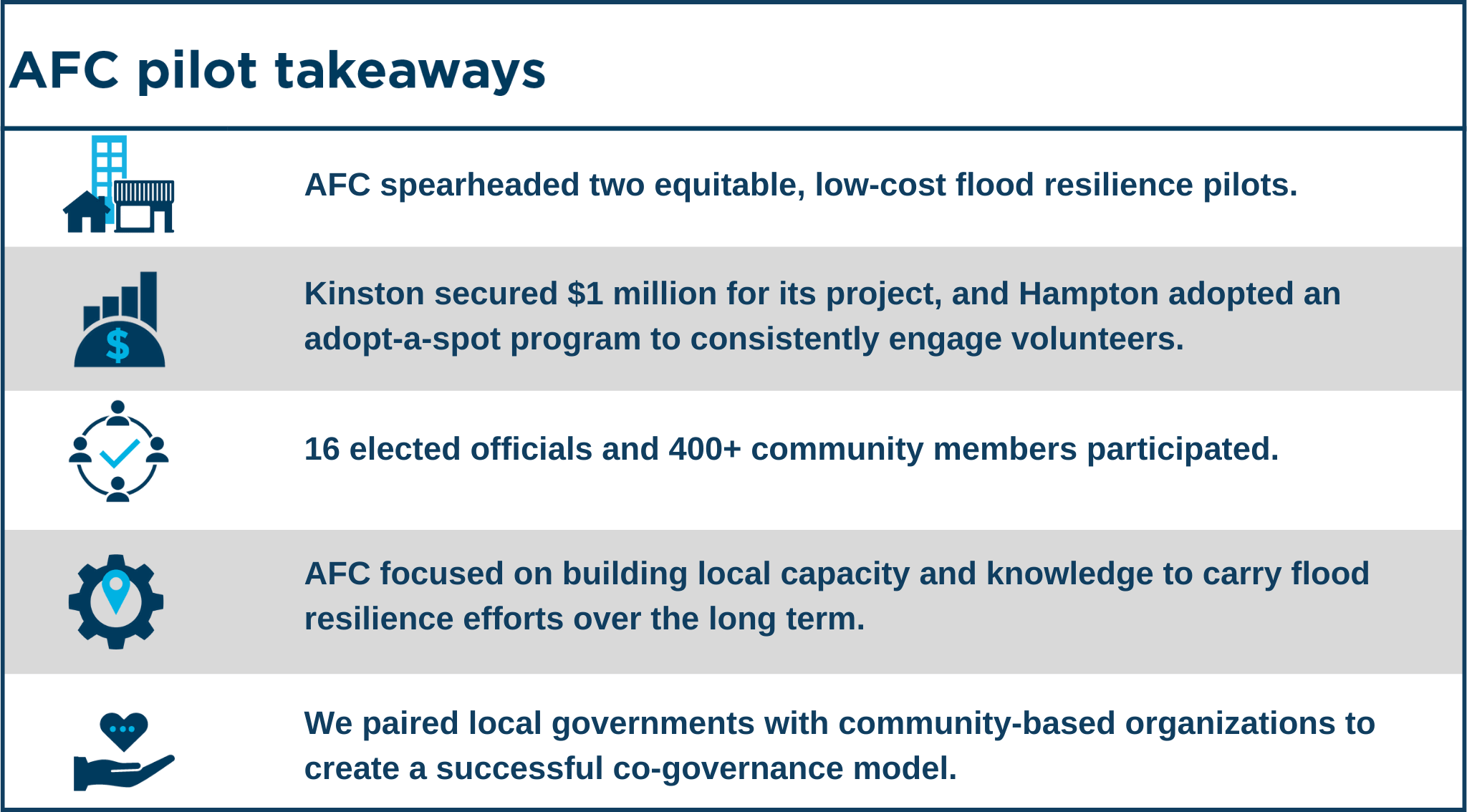
Flooding affects all parts of the country. In fact, in 2021 all 50 states and the District of Columbia experienced flooding. And local communities are hit especially hard by such impacts.
Faced with the costly recovery from these disasters, local communities often lack the resources to invest in projects to protect against floods — many others lack even the resources to understand their options after a flood.
To alleviate such problems in two urban communities, the American Flood Coalition spearheaded two innovative, fair, and nature-based flood resilience pilots in AFC member cities, through strong partnerships and with funding from the Kresge Foundation:
- In Hampton, Virginia, AFC substantially improved flood reduction features in a coastal park. Drawing upon strong local hands-on participation, voice, and sense of ownership throughout the project, the city launched its first-ever adopt-a-spot program for flood resilience, which allowed the Phoebus Partnership to officially “adopt” the Phoebus Waterfront Park and formalized opportunities for community members to be stewards of the park.
- In Kinston, North Carolina, AFC developed a master plan for improving flood reduction and public amenities in a neighborhood park. Spurred by local momentum and deep community engagement throughout the project, the city has used this master plan to secure $500,000 state funding (plus a $500,000 local match) for construction.
Working at the local, state, and federal levels, AFC is uniquely positioned to lead such deep on-the-ground work and share best practices with over 300 members that make up the Coalition.
Solutions driven by community members
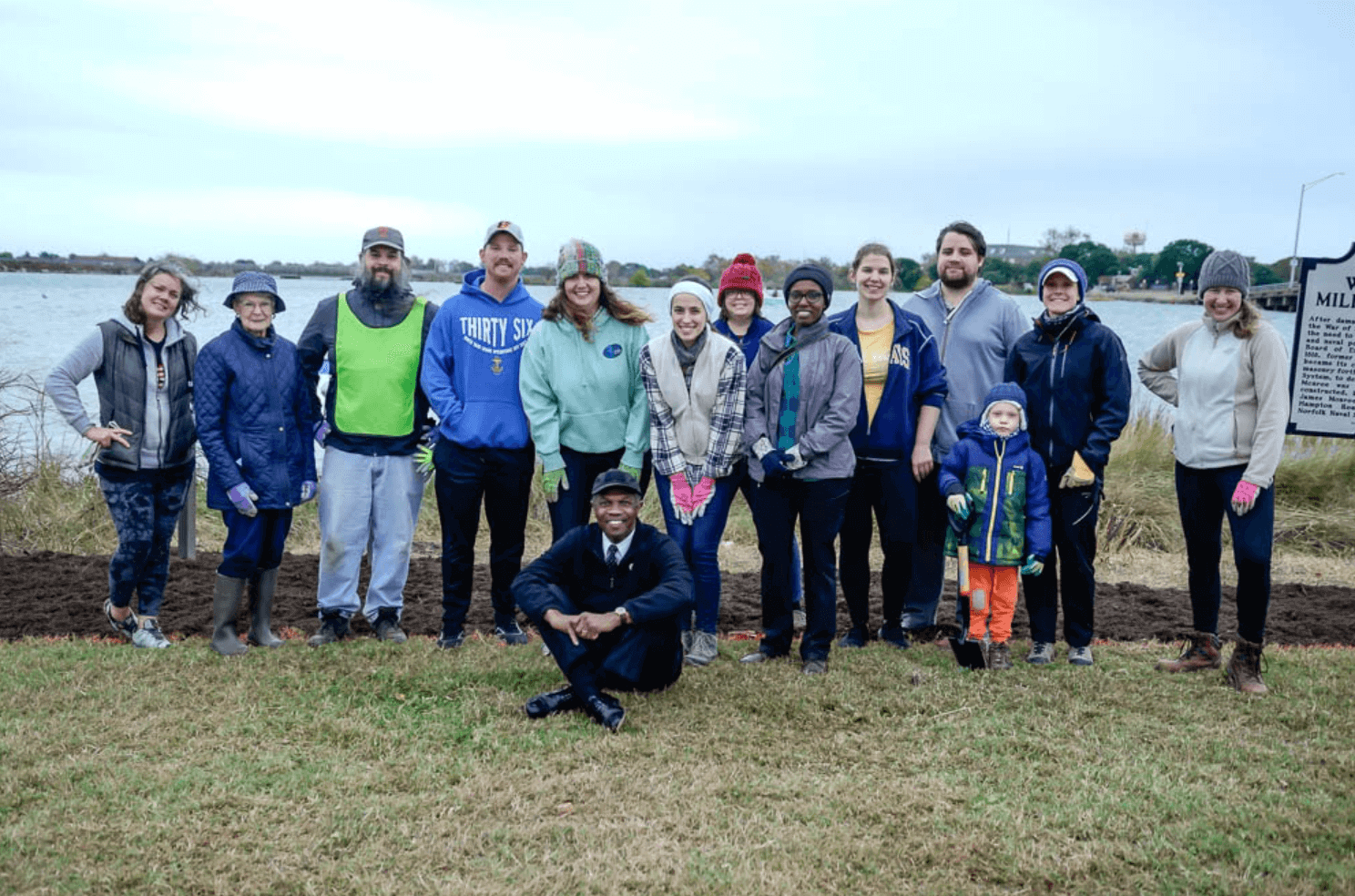
To create more fair and long-lasting outcomes in both pilots, AFC secured greater community buy-in by emphasizing the lived experiences and vision of community members for each project.
Overall, AFC engaged a total of 16 elected officials and over 400 community members across the two pilot communities. Just as importantly, in both pilots we paired local governments with community-based organizations, creating a successful co-governance model that other under-resourced communities can copy.
In Hampton, AFC worked directly with the Phoebus Partnership to help improve the coastline of the Phoebus Waterfront Park. To generate interest and gather feedback, we provided simple frameworks for online surveys and community workshops, and templates for social media graphics, mailers, fliers, door hangers, and lawn signs. These assets helped our local partners accelerate their work and promote ways to participate in the pilots.
Before the improvements, the park often went unused and its main flood reduction feature, a living shoreline, was not functioning well. After generating a greater sense of community ownership, volunteers improved the park to include an expanded planted buffer for the living shoreline and clear access to a kayak launch, which serves to reduce foot traffic over fragile areas of the shoreline while also encouraging recreation.
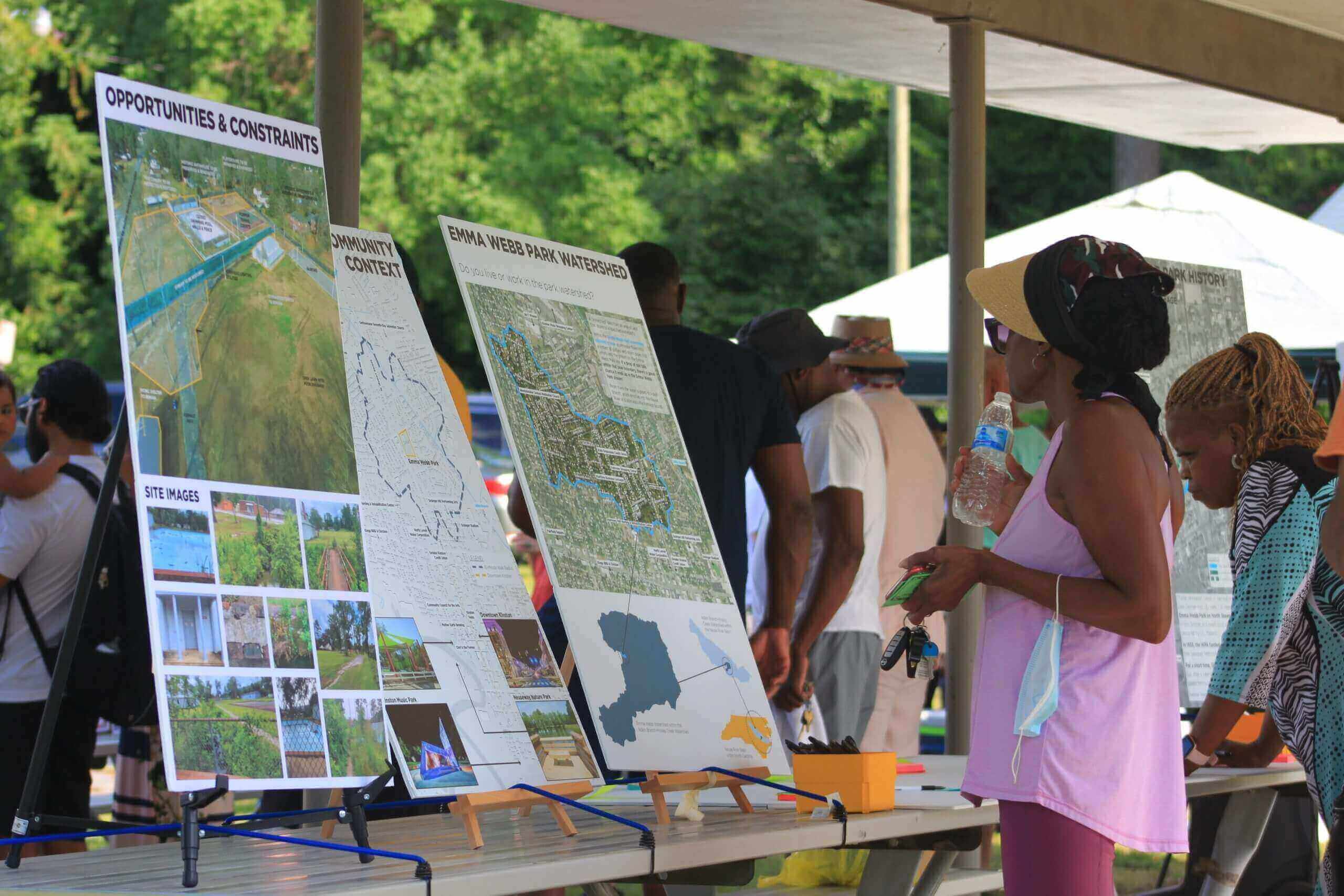
With a similar mindset in Kinston, AFC focused on ways to incorporate flood resilience into Emma Webb Park — a neighborhood park that has mostly gone unused in recent years, despite its rich history.
To determine how to improve the site, we supported a workshop where community members used paper Monopoly-style money to indicate preference for different park features. These preferred features eventually made it into a master plan, which the Kinston City Council approved.
“It is a community park which will represent and which will serve everyone in this community,” said Kinston Council Member Felicia Solomon. “Looking at this [master plan], I see the power of the arts that we’ve created in this city flowing into this park.”
Solutions built to last
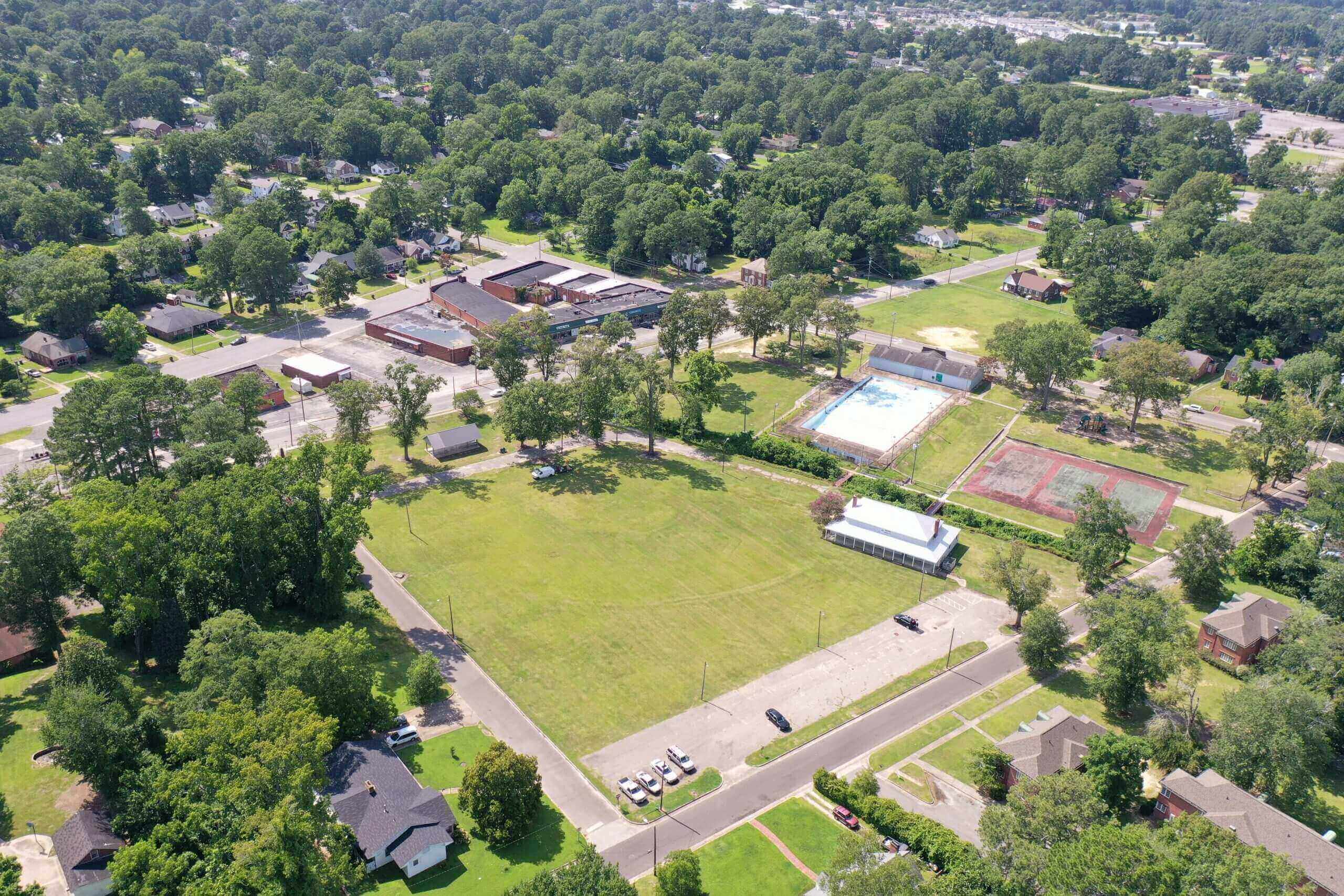
For both pilots, AFC focused on building local capacity and knowledge to carry out flood resilience efforts over the long term. To ensure these projects last, we engaged with elected officials early and often, and their buy-in positioned each community for longer-term success.
For example, we reached out to the mayors of Hampton and Kinston, who both actively participated in community workshops and publicly supported the pilots through social media, photos, press, and funding.
“Kinston is already leading by example,” said Kinston Mayor Dontario Hardy. “The city is working with the American Flood Coalition, Kinston Teens, Kinston/Lenoir Parks and Recreation, and others on a stream restoration effort at Emma Webb Park. Restoring our streams and wetlands has been shown to be an effective method to help contain and mitigate flood intensity for surrounding communities.”
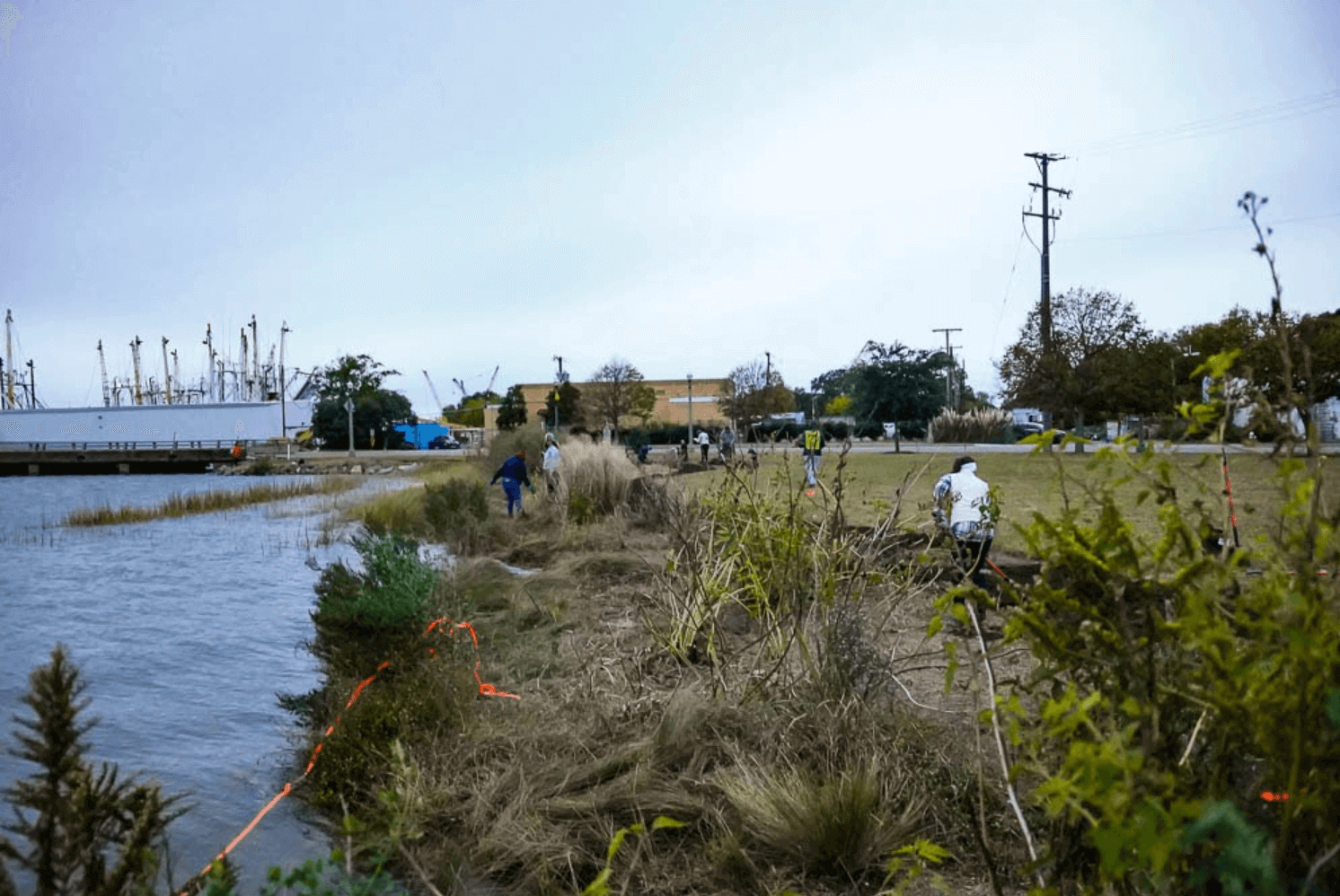
Such support by local leaders can prompt greater dialogue about flooding and what it means to residents, generate innovative ideas to build flood resilience into everyday spaces, and lead to greater community support for projects.
“The American Flood Coalition… provides formats and opportunities for Hampton to share our experiences and learn from the work of other coastal communities.” said Terry O’Neill, Hampton’s director of community development.
Through the pilots, AFC also forged local partnerships and brought new voices to the table. Though the community-based organizations had no prior experience engaging on flood issues, these partners are now sought-after voices and champions of flood resilience in their communities.
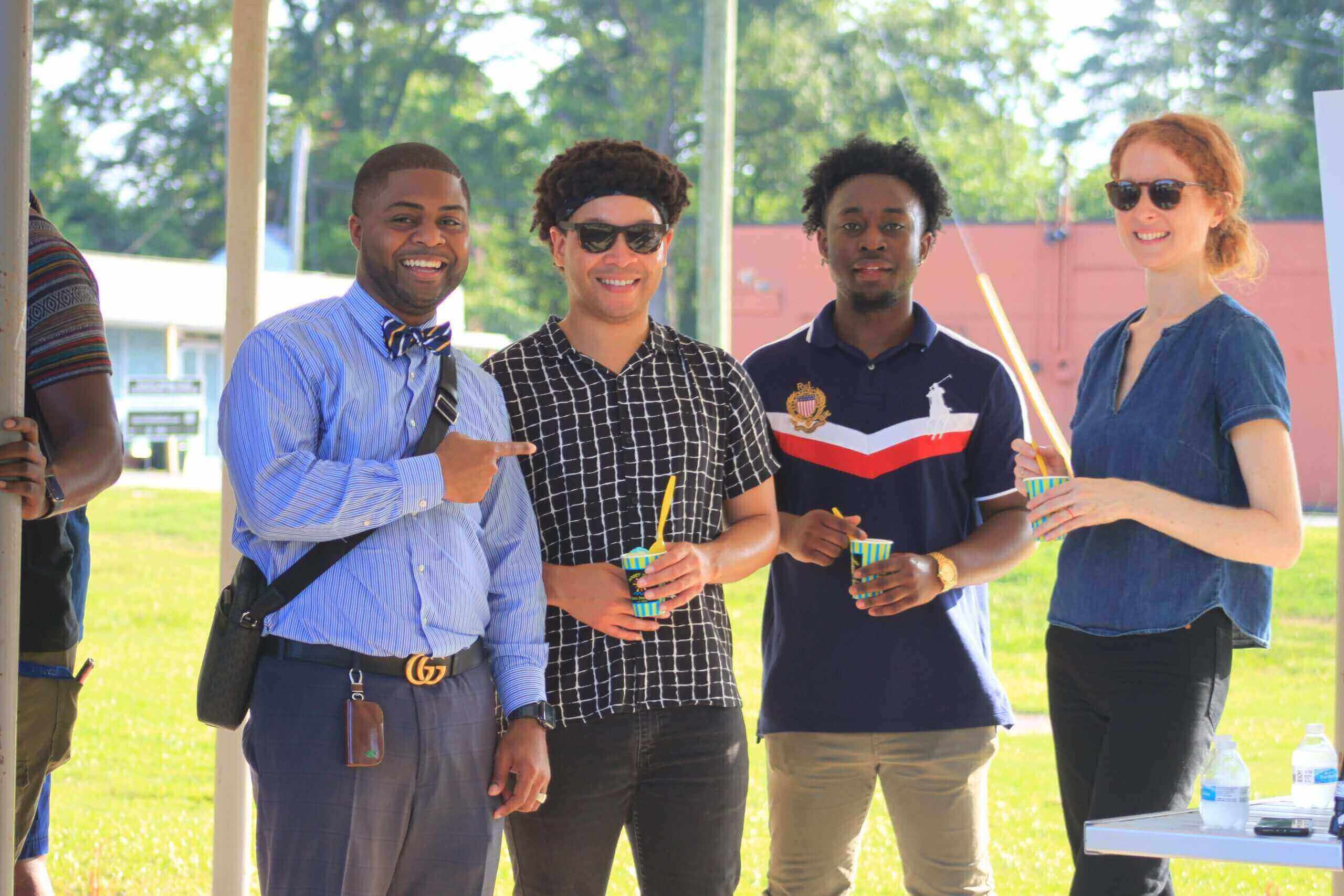
“After working with AFC, Hampton, and our technical consultant on our pilot, my technical knowledge of flood solutions has grown tremendously,” said Joe Griffith, a board member at the Phoebus Partnership. “I now understand much more about how to work with the city to build flood resilience across my neighborhood, and I’ve become a go-to community contact on flood planning as a result of this work.”
Not only did local leaders develop a stronger knowledge-base and voice on flood solutions — they also advanced two flood resilience pilots toward implementation:
- Investing $1 million in Kinston’s Emma Webb Park, through a $500,000 North Carolina Parks and Recreation Trust Fund (PARTF) grant and a local match of $500,000.
- Starting Hampton’s first-ever adopt-a-spot program for flood resilience to support ongoing volunteer engagement in Phoebus Waterfront Park.
Solutions for scale
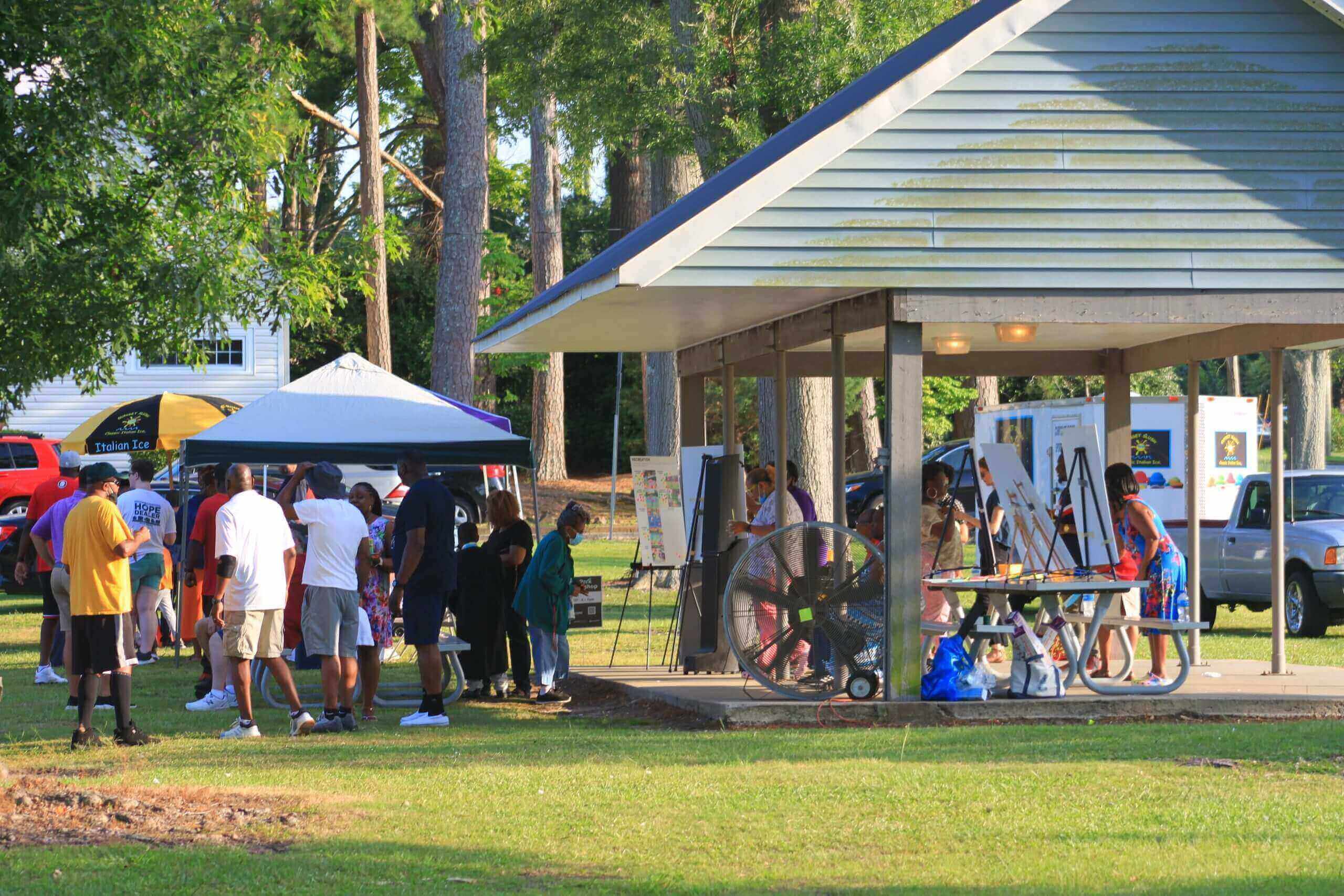
An important aspect in all AFC work is ensuring other communities can learn from solutions. In both communities, AFC worked with local partners to share project takeaways and plans with other communities interested in building resident-led flood resilience.
The nature of the projects also make them easier to scale. The communities focused on parks and unused lots, which are common across all types of communities; additionally, AFC and the communities used low-cost tactics to carry out the pilots.
AFC informed and assisted others in the field by sharing best practices and lessons learned through assets like blog posts, newsletters, and an AFC-hosted webinar, which reached people across more than 15 states.
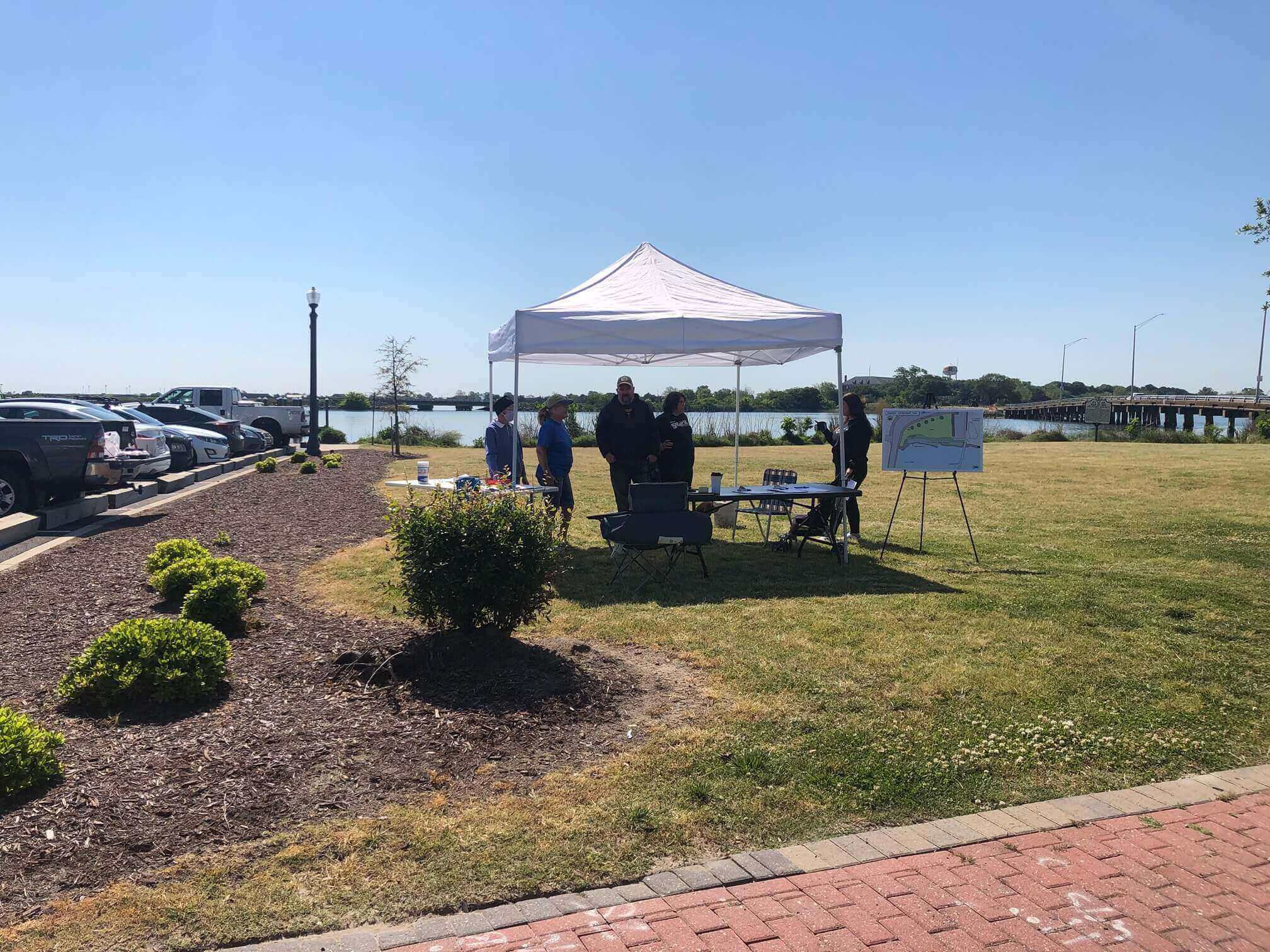
—
Floods often leave local communities to face the brunt of their impacts. By identifying and supporting these two projects, AFC advanced innovative, impactful, and scalable solutions that can help communities protect against flooding.
The projects also show the transformation a community can undergo — from lacking the capacity, resources, and information to get started, to becoming technical experts and advocates for flood solutions. With AFC’s support, these communities are now better equipped to prepare for and respond to future floods.
The American Flood Coalition-Phoebus Partnership Vision Booklet for Flood Resilience
—
More photos from the pilots
